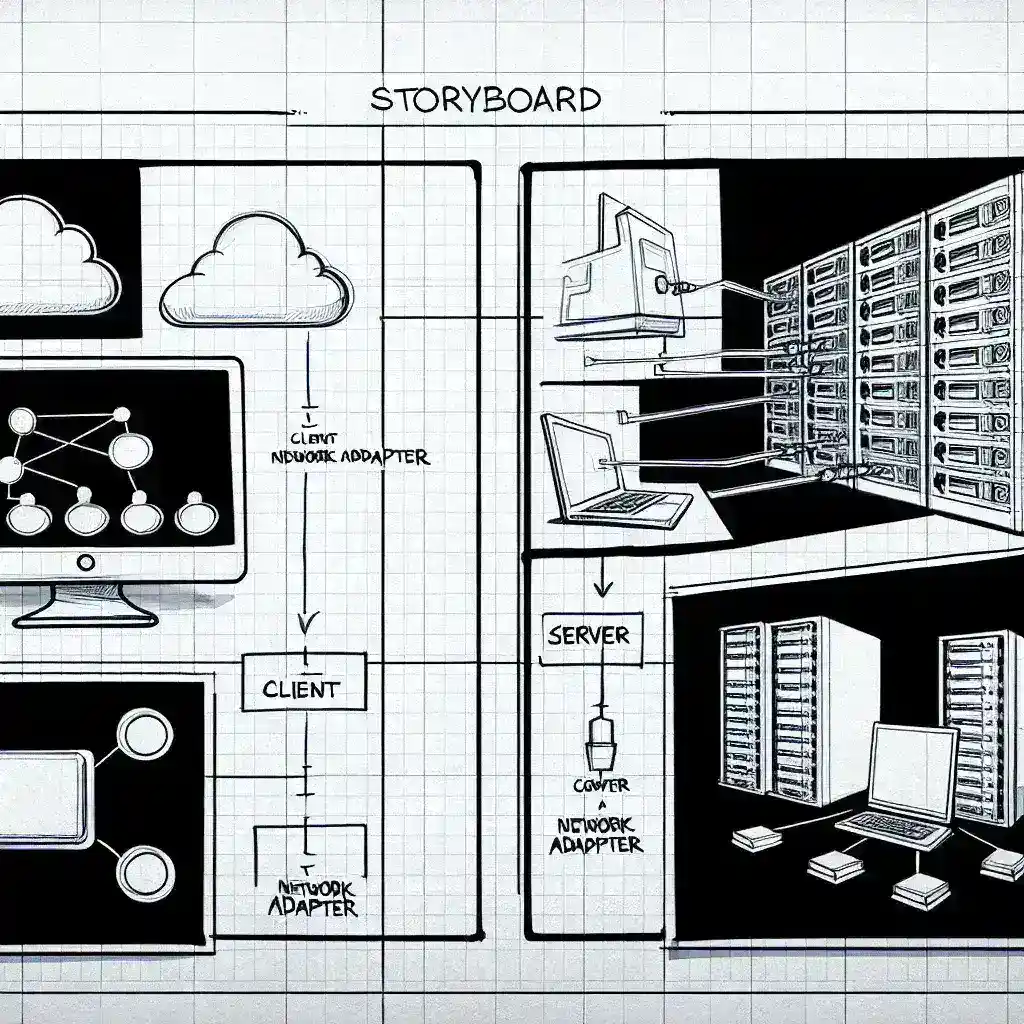Introduction
In the world of networking, both client and server network adapters play vital roles in ensuring efficient communication and data transfer between devices. However, these two types of network adapters serve different purposes and have distinct characteristics. Understanding the differences between client and server network adapters is crucial for optimizing network performance and ensuring seamless communication between devices.
Core Differences Between Client and Server Network Adapters
| Feature | Client Network Adapter | Server Network Adapter |
|---|---|---|
| Primary Use | End-user devices (PCs, laptops) | Servers and high-performance machines |
| Data Transfer Speed | Moderate | High |
| Processor Offloading | Less common | Common |
| Advanced Features | Basic | Advanced (e.g., load balancing) |
| Network Protocols | Standard (TCP/IP, Ethernet) | Enhanced (iSCSI, RDMA) |
Primary Use
Client Network Adapters:
Client network adapters are typically found in end-user devices such as personal computers, laptops, and smartphones. These adapters facilitate connectivity to local area networks (LAN) and the internet, allowing users to access resources and communicate with other devices.
Server Network Adapters:
Server network adapters, on the other hand, are designed for servers and high-performance computing machines. These adapters handle high volumes of data transfer, manage network traffic, and support multiple connected clients simultaneously. They are essential for data centers, cloud services, and enterprise networks.
Data Transfer Speed
Client Network Adapters:
Client network adapters generally offer moderate data transfer speeds suitable for typical usage scenarios like web browsing, streaming, and file downloading. Speeds typically range from 100 Mbps to 1 Gbps.
Server Network Adapters:
Server network adapters are engineered for superior data transfer speeds, often exceeding 1 Gbps, and can reach up to 100 Gbps or more. This capability is essential for handling large volumes of data and ensuring minimal latency in data centers and enterprise networks.
Processor Offloading
Client Network Adapters:
Processor offloading is less common in client network adapters. Most client devices do not require advanced capabilities as their networking needs are relatively straightforward.
Server Network Adapters:
Server network adapters frequently incorporate processor offloading features. Offloading tasks like TCP checksum computation, segmentation, and encryption from the CPU to the network adapter’s dedicated hardware can significantly reduce CPU load, resulting in better overall performance.
Advanced Features
Client Network Adapters:
Client network adapters usually come with basic features sufficient for everyday internet and network access. They support standard protocols and offer reliability for routine tasks.
Server Network Adapters:
Server network adapters boast advanced features such as load balancing, failover capabilities, and hardware compatibility with virtualization technologies. These features improve scalability, reliability, and network efficiency.
Network Protocols
Client Network Adapters:
Client network adapters support standard network protocols like TCP/IP, Ethernet, and Wi-Fi. These protocols suffice for most consumer-level internet activities and network communications.
Server Network Adapters:
In addition to the standard protocols, server network adapters support enhanced protocols such as iSCSI (Internet Small Computer Systems Interface) and RDMA (Remote Direct Memory Access). These protocols are key in high-performance computing environments and virtualized infrastructure.
Conclusion
While client and server network adapters both serve the crucial role of facilitating network connectivity, their use cases, features, and capabilities differ significantly. Client network adapters prioritize ease of use, reliability, and reasonable data transfer speeds, making them ideal for everyday consumer devices. In contrast, server network adapters are designed to handle the rigorous demands of enterprise environments, offering advanced features, high data transfer speeds, and robust performance enhancements through processor offloading. Understanding these differences can help organizations and individuals make informed decisions to optimize their network infrastructure.

